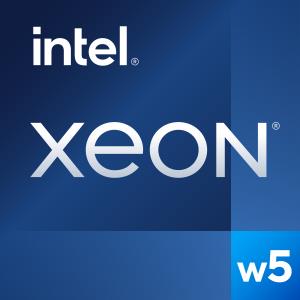Cart
- Cart Empty!
- Appliances
- Books
- Software Esd
- Audio/ Video/ Multimedia
- Cables & Accessories
- Communication & Networking
- Controller & Interface
- Imaging & Photography
- Input Devices
- Monitor & Display
- Motherboard/ Memory/ Processor
- Notebook/ Tablet Pc/ E-book
- Pc & Workstation
- Power Components & Protection
- Printer/ Aio/ Copier/ Fax
- Projectors
- Servers
- Software
- Storage
- Telephony/ Handhelds
Every effort has been made to ensure the accuracy of all information contained herein. e-nitiative shall not be liable for any changes resulting in wrong product description, tax code and/or price. The shown information (specifications, prices, taxes) should be considered as an indication and can be changed at any moment and without any prior notice.
Rue Van Eyck, 22
Bruxelles
B-1000
Belgium




Product Details
Introduction
Intel® Trusted Execution Technology
Intel® Trusted Execution Technology for safer computing is a versatile set of hardware extensions to Intel® processors and chipsets that enhance the digital office platform with security capabilities such as measured launch and protected execution. It enables an environment where applications can run within their own space, protected from all other software on the system.
Intel® Virtualization Technology for Directed I/O (VT-d)
Intel® Virtualization Technology for Directed I/O (VT-d) continues from the existing support for IA-32 (VT-x) and Itanium® processor (VT-i) virtualization adding new support for I/O-device virtualization. Intel VT-d can help end users improve security and reliability of the systems and also improve performance of I/O devices in virtualized environments.
Intel® Virtualization Technology (VT-x)
Intel® Virtualization Technology (VT-x) allows one hardware platform to function as multiple “virtual” platforms. It offers improved manageability by limiting downtime and maintaining productivity by isolating computing activities into separate partitions.
Intel® 64
Intel® 64 architecture delivers 64-bit computing on server, workstation, desktop and mobile platforms when combined with supporting software.ą Intel 64 architecture improves performance by allowing systems to address more than 4 GB of both virtual and physical memory.
Cache
CPU Cache is an area of fast memory located on the processor. Intel® Smart Cache refers to the architecture that allows all cores to dynamically share access to the last level cache.
Intel® AES New Instructions
Intel® AES New Instructions (Intel® AES-NI) are a set of instructions that enable fast and secure data encryption and decryption. AES-NI are valuable for a wide range of cryptographic applications, for example: applications that perform bulk encryption/decryption, authentication, random number generation, and authenticated encryption.
Intel® Turbo Boost Technology
Intel® Turbo Boost Technology dynamically increases the processor's frequency as needed by taking advantage of thermal and power headroom to give you a burst of speed when you need it, and increased energy efficiency when you don’t.
Max Turbo Frequency
Max Turbo Frequency is the maximum single-core frequency at which the processor is capable of operating using Intel® Turbo Boost Technology and, if present, Intel® Turbo Boost Max Technology 3.0 and Intel® Thermal Velocity Boost. Frequency is typically measured in gigahertz (GHz), or billion cycles per second.
Execute Disable Bit
Execute Disable Bit is a hardware-based security feature that can reduce exposure to viruses and malicious-code attacks and prevent harmful software from executing and propagating on the server or network.
Intel® Hyper-Threading Technology
Intel® Hyper-Threading Technology (Intel® HT Technology) delivers two processing threads per physical core. Highly threaded applications can get more work done in parallel, completing tasks sooner.
Instruction Set
An instruction set refers to the basic set of commands and instructions that a microprocessor understands and can carry out. The value shown represents which Intel’s instruction set this processor is compatible with.
Intel® VT-x with Extended Page Tables (EPT)
Intel® VT-x with Extended Page Tables (EPT), also known as Second Level Address Translation (SLAT), provides acceleration for memory intensive virtualized applications. Extended Page Tables in Intel® Virtualization Technology platforms reduces the memory and power overhead costs and increases battery life through hardware optimization of page table management.
Enhanced Intel SpeedStep® Technology
Enhanced Intel SpeedStep® Technology is an advanced means of enabling high performance while meeting the power-conservation needs of mobile systems. Conventional Intel SpeedStep® Technology switches both voltage and frequency in tandem between high and low levels in response to processor load. Enhanced Intel SpeedStep® Technology builds upon that architecture using design strategies such as Separation between Voltage and Frequency Changes, and Clock Partitioning and Recovery.
Intel® Speed Shift Technology
Intel® Speed Shift Technology uses hardware-controlled P-states to deliver dramatically quicker responsiveness with single-threaded, transient (short duration) workloads, such as web browsing, by allowing the processor to more quickly select its best operating frequency and voltage for optimal performance and power efficiency.
Intel® Turbo Boost Technology 2.0 Frequency
Intel® Turbo Boost Technology 2.0 Frequency is the maximum single core frequency at which the processor is capable of operating using Intel® Turbo Boost Technology. Frequency is typically measured in gigahertz (GHz), or billion cycles per second.
Intel® Software Guard Extensions (Intel® SGX)
Intel® Software Guard Extensions (Intel® SGX) provide applications the ability to create hardware enforced trusted execution protection for their applications’ sensitive routines and data. Intel® SGX provides developers a way to partition their code and data into CPU hardened trusted execution environments (TEE’s).
Intel® Deep Learning Boost (Intel® DL Boost)
A new set of embedded processor technologies designed to accelerate AI deep learning use cases. It extends Intel AVX-512 with a new Vector Neural Network Instruction (VNNI) that significantly increases deep learning inference performance over previous generations.
Instruction Set Extensions
Instruction Set Extensions are additional instructions which can increase performance when the same operations are performed on multiple data objects. These can include SSE (Streaming SIMD Extensions) and AVX (Advanced Vector Extensions).
Intel® Turbo Boost Max Technology 3.0 Frequency
Intel® Turbo Boost Max Technology 3.0 identifies the best performing core(s) on a processor and provides increased performance on those cores through increasing frequency as needed by taking advantage of power and thermal headroom. Intel® Turbo Boost Max Technology 3.0 frequency is the clock frequency of the CPU when running in this mode.
Intel® Turbo Boost Max Technology 3.0
Intel® Turbo Boost Max Technology 3.0 identifies the best performing core(s) on a processor and provides increased performance on those cores through increasing frequency as needed by taking advantage of power and thermal headroom.
Intel® Total Memory Encryption
TME – Total Memory Encryption (TME) helps protect data against exposure via physical attack on memory, such as cold-boot attacks.
Max # of UPI Links
Intel® Ultra Path Interconnect (UPI) links are a high speed, point-to-point interconnect bus between the processors, delivering increased bandwidth and performance over Intel® QPI.
# of AVX-512 FMA Units
Intel® Advanced Vector Extensions 512 (AVX-512), new instruction set extensions, delivering ultra-wide (512-bit) vector operations capabilities, with up to 2 FMAs (Fused Multiply Add instructions), to accelerate performance for your most demanding computational tasks.
Intel® Resource Director Technology (Intel® RDT)
Intel® RDT brings new levels of visibility and control over how shared resources such as last-level cache (LLC) and memory bandwidth are used by applications, virtual machines (VMs) and containers.
Intel® Optane™ Persistent Memory Supported
Intel® Optane™ persistent memory is a revolutionary tier of non-volatile memory that sits between memory and storage to provide large, affordable memory capacity that is comparable to DRAM performance. Delivering large system-level memory capacity when combined with traditional DRAM, Intel Optane persistent memory is helping transform critical memory constrained workloads – from cloud, databases, in-memory analytics, virtualization, and content delivery networks.
Mode-based Execute Control (MBEC)
Mode-based Execute Control can more reliably verify and enforce the integrity of kernel level code.
Intel® Boot Guard
Intel® Device Protection Technology with Boot Guard helps protect the system’s pre-OS environment from viruses and malicious software attacks.
Intel® Control-Flow Enforcement Technology
CET - Intel Control-flow Enforcement Technology (CET) helps protect against the misuse of legitimate code snippets through return-oriented programming (ROP) control-flow hijacking attacks.
Intel® Transactional Synchronization Extensions
Intel® Transactional Synchronization Extensions (Intel® TSX) are a set of instructions that add hardware transactional memory support to improve performance of multi-threaded software.
Processor
Processor manufacturer
Intel
Processor model
w5-2465X
Processor base frequency
3.1 GHz
Processor family
Intel Xeon W
Processor cores
16
Processor socket
FCLGA4677
Processor threads
32
Processor operating modes
64-bit
Performance cores
16
Processor boost frequency
4.7 GHz
Processor cache
33.75 MB
Processor cache type
Smart Cache
Box
Y
Processor base power
200 W
Maximum turbo power
240 W
Stepping
S3
Bus type
DMI4
Processor codename
Sapphire Rapids
Processor ARK ID
233415
Memory
Maximum internal memory supported by processor
2000 GB
Memory types supported by processor
DDR4-SDRAM
Memory channels
Quad-channel
ECC
Y
Graphics
On-board graphics card
N
Discrete graphics card
N
On-board graphics card model
Not available
Discrete graphics card model
Not available
Features
Execute Disable Bit
Y
Market segment
Workstation
Use conditions
Workstation
Maximum number of PCI Express lanes
64
PCI Express slots version
5.0
Supported instruction sets
SSE4.1, AMX, SSE4.2, AVX 2.0, AVX-512
Scalability
1S
CPU configuration (max)
1
Embedded options available
N
Direct Media Interface (DMI) Revision
4.0
Export Control Classification Number (ECCN)
5A992C
Commodity Classification Automated Tracking System (CCATS)
G180729
Processor special features
Intel® Hyper Threading Technology (Intel® HT Technology)
Y
Intel® Turbo Boost Technology
2.0
Intel® AES New Instructions (Intel® AES-NI)
Y
Enhanced Intel SpeedStep Technology
Y
Intel Trusted Execution Technology
Y
Intel® Speed Shift Technology
Y
Intel® Turbo Boost Max Technology 3.0 frequency
4.7 GHz
Intel® Turbo Boost Technology 2.0 frequency
4.5 GHz
Intel® Transactional Synchronization Extensions
Y
Intel® Total Memory Encryption
Y
Intel® Control-flow Enforcement Technology (CET)
Y
Intel® Platform Firmware Resilience Support
Y
Intel VT-x with Extended Page Tables (EPT)
Y
Intel® Active Management Technology (Intel® AMT)
Y
Intel® OS Guard
Y
Intel Software Guard Extensions (Intel SGX)
N
Intel 64
Y
Intel Virtualization Technology (VT-x)
Y
Intel Virtualization Technology for Directed I/O (VT-d)
Y
Intel Turbo Boost Max Technology 3.0
Y
AVX-512 Fused Multiply-Add (FMA) units
2
Intel® Boot Guard
Y
Intel® Deep Learning Boost (Intel® DL Boost)
Y
Intel® Resource Director Technology (Intel® RDT)
N
Mode-based Execute Control (MBE)
Y
Intel® Optane™ DC Persistent Memory Supported
N
Intel® vPro™ Platform Eligibility
Y
Intel® One-Click Recovery
N
Intel® Remote Platform Erase (RPE)
N
Intel® Virtualization Technology with Redirect Protection (VT-rp)
Y
Intel vPro® Enterprise Platform Eligibility
Y
Intel® Threat Detection Technology (TDT)
N
Intel® Total Memory Encryption - Multi Key
N
Intel® QuickAssist Software Acceleration
N
Operational conditions
Tcase
78 °C
Technical details
Launch date
Q1'23
Status
Launched
Supported memory types
DDR5-SDRAM
Memory speed (max)
4800 MHz
Logistics data
Harmonized System (HS) code
8542310001
Packaging data
Package type
Retail box
Weight & dimensions
Processor package size
77.5 x 56.5 mm
Other features
Maximum internal memory
2000 GB


















